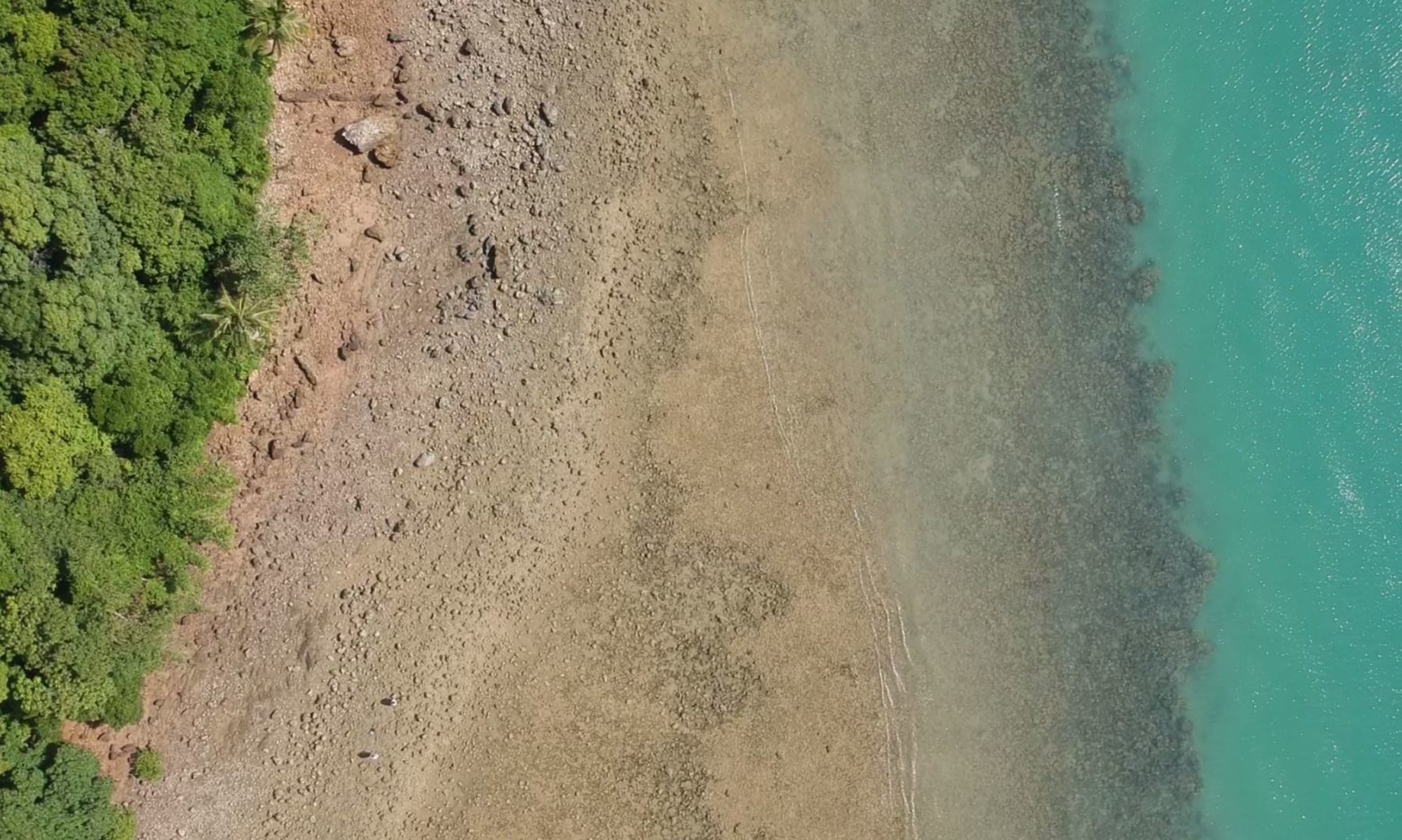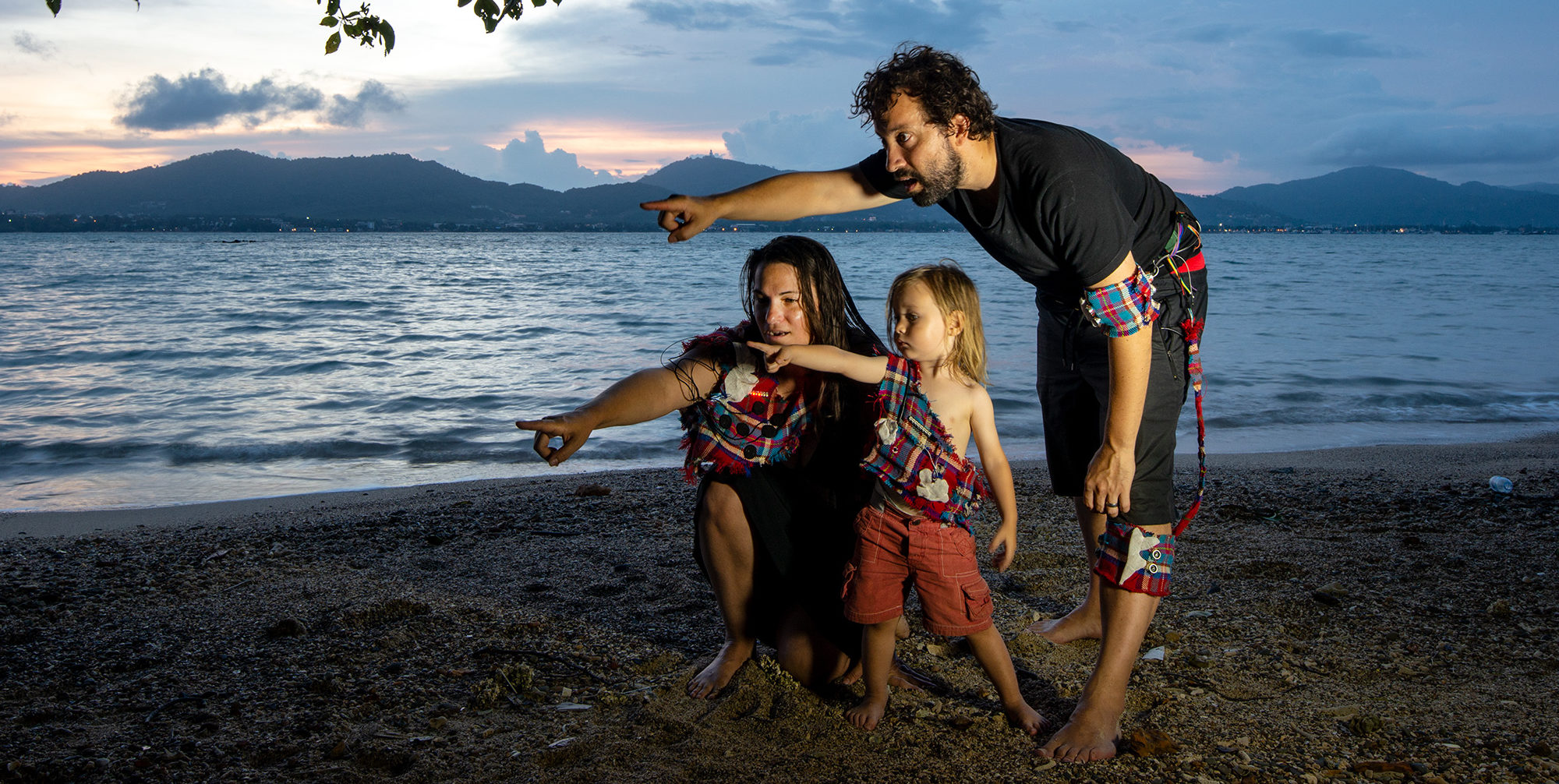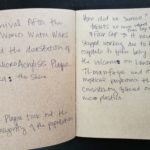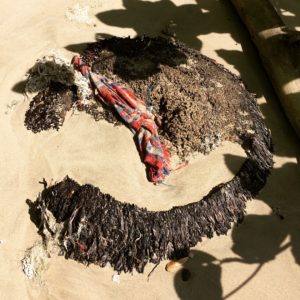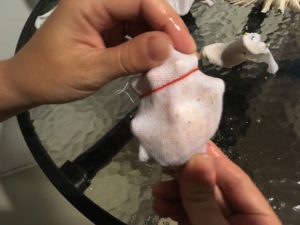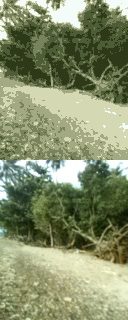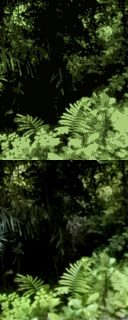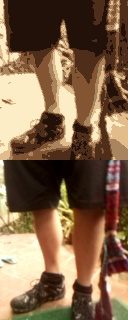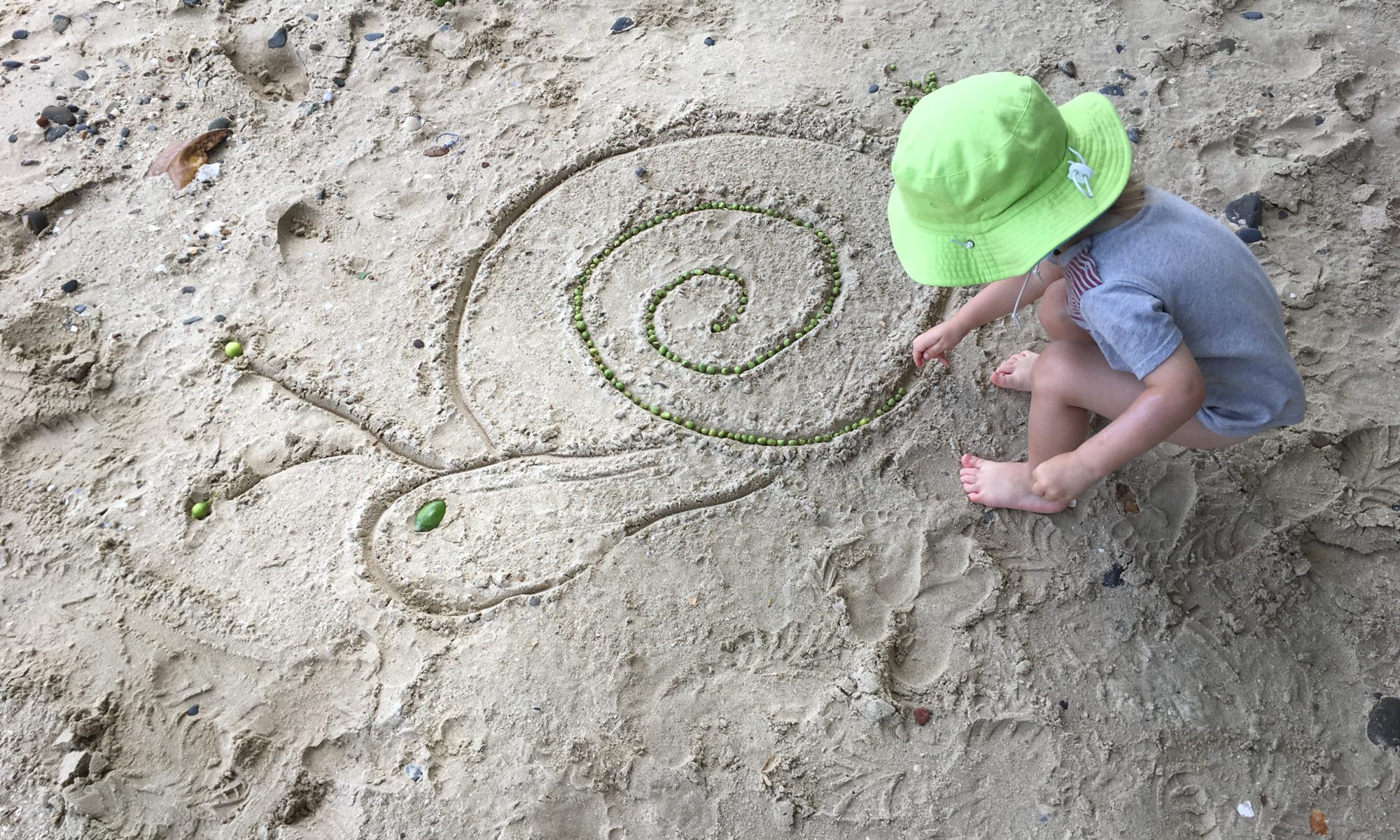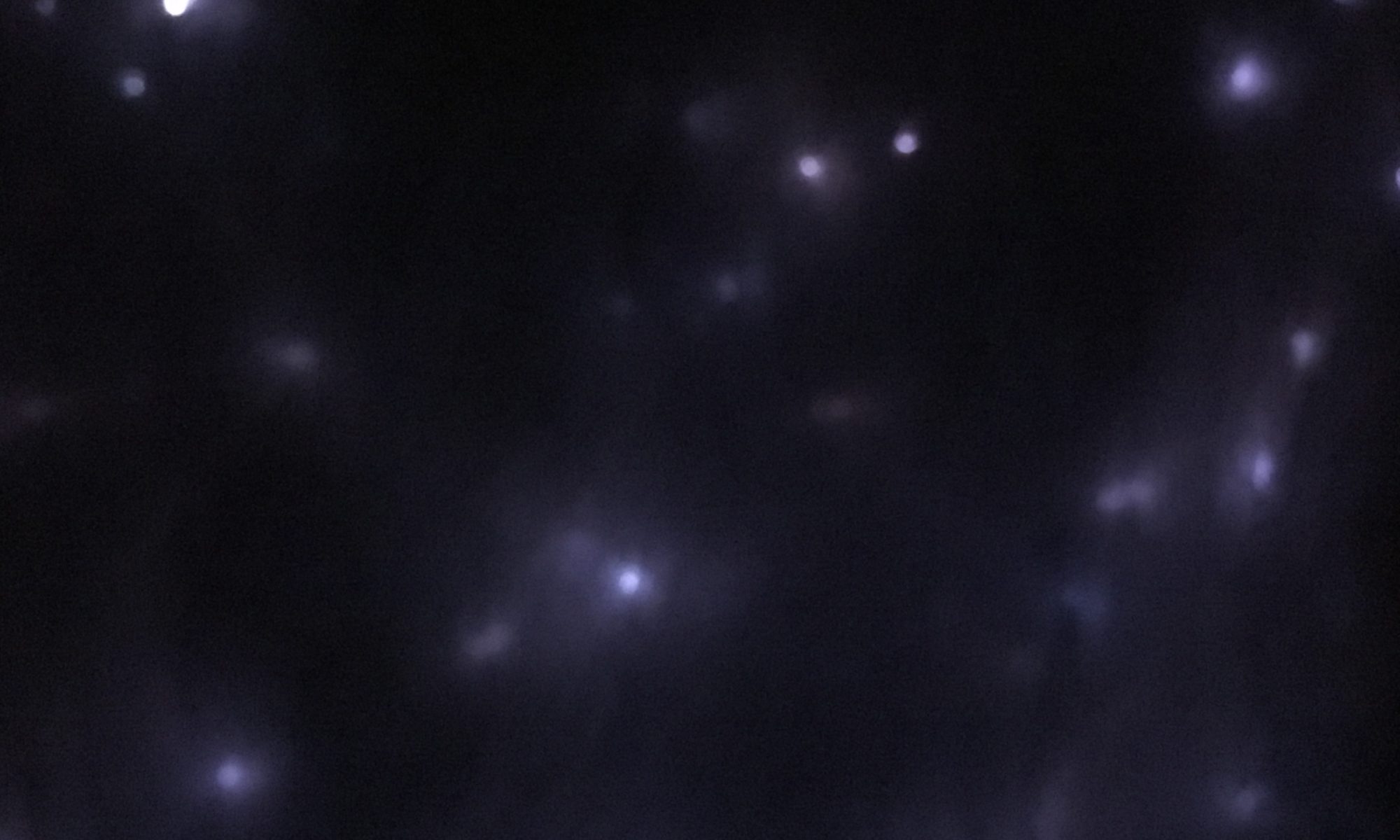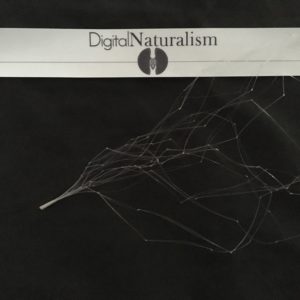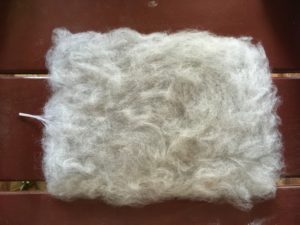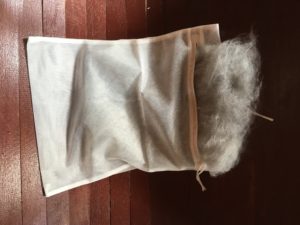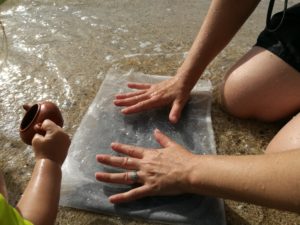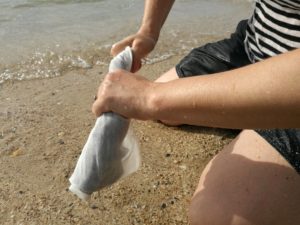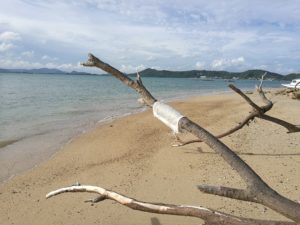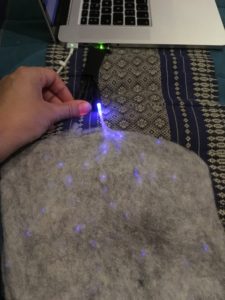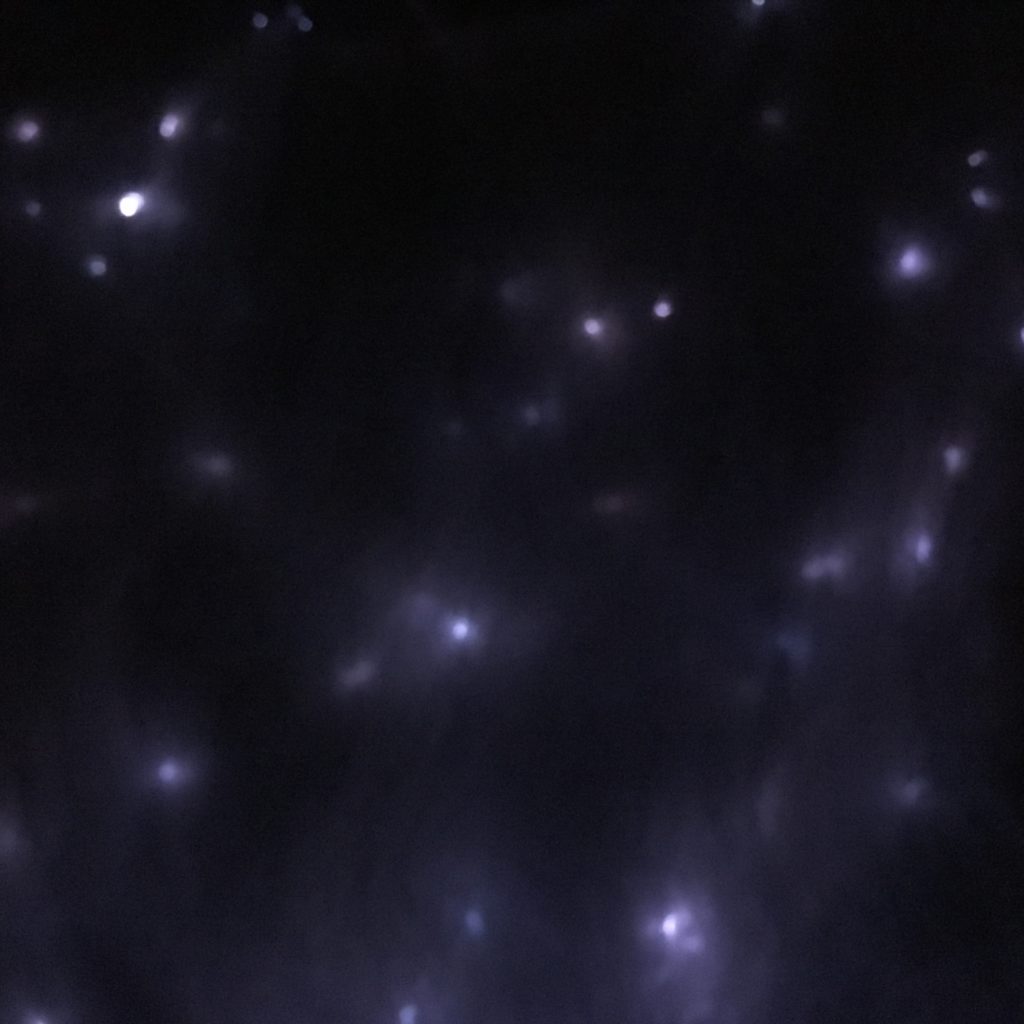by Elizabeth Bigger, Luis Fraguada, and Agosto
Thanks to Dani, Mark, and Umeed for help with documentation
We considered a new communication method for our tribe while adventuring within the island. We desired the ability to communicate in more tonal short messages like birds and other animals. This is part of our theory to try to design to engage and merge with nature, instead of designing ‘on top’ of nature or not considering nature and its inhabitants in design processes. Our idea further grew over curry and a tribe story writing session and then brought to life via the podcast episode Biobang 006.
Textile
Walking the on beach the first day on the island, we came across a tree with something stuck in it, and it was a tartan! Having an affinity for all things tartan, we found this serendipitously perfect for our tribeNETs textile needs. We were also able to find another small rag of the tartan in a nearby tree stump. We washed the textile and hung it to dry in the sun.
Patterning
The pieces of tartan were patterned, marked and cut, beach side. Using string to translate live measurements and marking the pattern pieces with washed up beach coral pieces. I cut the pieces using first aid kit scissors and hand sewed the pieces together. I stitched the electronics to the wearable pieces and made the appropriate channels to protect wiring and cords. The last pieces to to be attached were the protective mesh shell forms over the esp8266 Node MCU modules. All pieces were constructed with reusability in mind, as if we were in actual survival, we’d want to be able to reuse and alter pieces as necessity and need called for.
Buckram shell castings
To create the mesh networks protective meshes, we cast buckram over various seashells from the island. These forms we created with water and buckram, and rubber bands from the dinner food boxes to hold the forms while they dried. After carefully unwrapping the dried formed buckram we were left with the mesh shapes to protect TribeNET electronic components.
Mesh network
The three wearables are linked together via a mesh network based on the esp8266 Node MCU modules. These nodes are easily programmable via the Arduino IDE, with the complexities of mesh network topologies abstracted out. Two nodes essentially translate an input signal into tones, sent to the output node (worn by Elizabeth). Each node included an addressable RGB LED stick which shows information about the mesh topology, including if a node is online or not. MQTT was utilized as the base data protocol for publishing and subscribing to the different nodes’ data stream.
Camera Node
The Camera node takes a live video feed and runs a kmeans clustering of the color information of the input video frame. The camera is mounted to the front of the wearer, giving the system a view in front of the hiking party. These predominant colors are encoded into tone and duration information and transmitted to the Speaker node.
Proximity Node
The Proximity node takes a series of ultrasonic sensor inputs distributed along the height of the human wearing them and translates this “section” into tones. Because the sensors are distributed along the height of the wearer, the textile pattern extends from the shoulder to the ankle. These tones are transmitted to the Speaker node.
Speakers Node
The Speaker node receives signals from the other nodes in the system and creates a melody which describes the current reality of the hiking party. The data from the nodes was strictly mapped from sensor signal inputs into tone and duration. The resulting melodies must be learned to be understood. The speakers were sourced from the airline headphones we received on our way to Koh Lon. The internal components were harvested from their plastic casing and rewired to the mcu. While this is a low power, low volume solution, it worked very well for the hiking party.
Hike
TribeNET was used on a hike through the paths of Koh Lon. During this hike the hiking party started to get used to the melodies created by the Speakers Node, These melodies were a combination of the sensor data, so it corresponded to the colors on the Camera Node and the ultrasonic sensors on the Proximity Node. While the hike was short, the party already could start to discern the melodies created when they were in different positions and next to different kinds of vegetation.


Output
While the ‘TribeNET’ project started to be conceived prior to Dinacon, it really took shape on the island during a particular lunch where a story was conceived about a group of travelers that came to Koh Lon a few months in the future after Dinacon. The story also had inspirations from episodes of the Biobang podcast, especially the episode with the Bathisphere. In this story, TribeNET is worn by the party of travelers to become a part of nature, or at least, to try to understand nature and become nature themselves. This is because in the future (November 2018 in the story) many things had changed. Microplastic infiltration into everything led to a shortage of clean water like the world had never seen. Countries engaged in the latest of the Water Wars as citizens began to contract MicroAcrylisys (aka The Shine), a new form of skin disease that starts to produce plastic sores on the epidermis and is transmitted by drinking and absorbing microplastic polluted water. At first, this disease was confused as a trend as people began to accessorize their Shine sores with 3d printed parts and hot glued lab grown crystals. The TribeNET travelers are able to escape contracting The Shine by drinking water filtered by the Faircap (http://faircap.org/) and designing their TribeNET wearables. In order to warn the Dinacon participants, the travelers go back in time through a newly discovered, but very dangerous mode of transportation called Light House Jumping, or Light Jumping for short. This allows travelers to jump from light house to light house instantaneously, albeit to another point in time. Unprotected light house jumping causes immediate and advanced skin diseases so protective suits must be worn. Unfortunately, many light house jumping pioneers perished just days after the discovery due to unprotected light house jumping. The travelers jumped back in time to Dinacon at Koh Lon to share the future with the participants and to share their technical knowledge in hopes to steer the future away from the Water Wars, The Shine, and Distopia.
